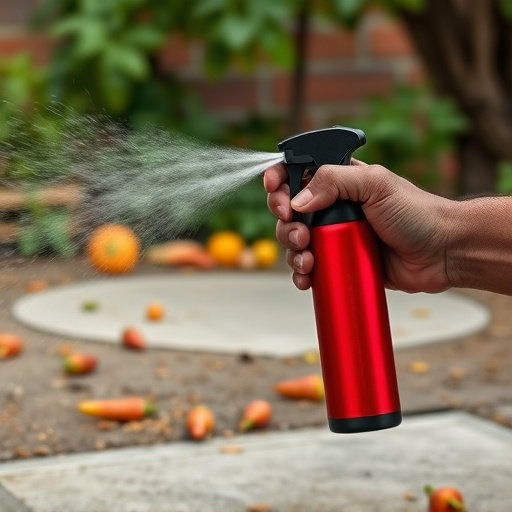In case of pepper spray exposure, flush eyes with clean water for 15+ minutes, remove contaminated clothing, and move to fresh air. For severe symptoms like respiratory distress or skin irritation, seek medical attention promptly. Use cooling compresses, antihistamines, and corticosteroids for temporary relief; create a soothing environment and wear loose clothing to aid recovery.
“Discover the power of civilian-grade pepper defense spray and its impact on personal safety. This article guides you through understanding the composition and effects of this potent self-defense tool, offering crucial insights into immediate first aid measures after exposure. Learn essential long-term care strategies for victims, ensuring recovery and resilience against pepper spray attacks. Explore practical tips on how to treat pepper spray exposure effectively, empowering individuals to stay safe in today’s world.”
- Understanding Pepper Spray Composition and Effects
- Immediate Steps After Exposure: First Aid Measures
- Long-Term Care and Recovery Strategies for Pepper Spray Victims
Understanding Pepper Spray Composition and Effects
Pepper spray, a popular self-defense tool, is a chemical compound designed to cause temporary disability and disorientation in an attacker. Its primary active ingredient is capsaicin, derived from chili peppers. This substance stimulates nerve endings, leading to intense pain, coughing, and difficulty breathing. The composition also includes various other chemicals that enhance its effectiveness and extend its reach.
When exposed to pepper spray, the eyes are particularly vulnerable due to their sensitivity. How to Treat Pepper Spray Exposure involves immediate actions such as rinsing eyes with clean water for at least 15 minutes to dilute the chemical. Removing contaminated clothing and seeking fresh air is crucial. In severe cases, medical attention should be sought, as pepper spray exposure can lead to respiratory distress or other health complications.
Immediate Steps After Exposure: First Aid Measures
After exposure to civilian-grade pepper spray, immediate action is crucial for effective first aid. If eyes are affected, flush them thoroughly with clean water for at least 15 minutes; this helps to dilute and remove the irritant chemicals. Inhaling pepper spray can cause respiratory distress, so move the affected individual to an area with fresh air immediately. If clothing is contaminated, remove them carefully to prevent further skin contact and irritation.
For skin exposure, gently wash the affected areas with mild soap and water. Do not use harsh detergents or rubbing alcohol, as these can exacerbate the irritation. Apply a cold compress or ice pack wrapped in a thin cloth to reduce swelling and discomfort. If symptoms persist or worsen, seek medical attention promptly. How to treat pepper spray exposure varies based on the severity, so it’s important to monitor for signs of severe reaction, such as difficulty breathing, dizziness, nausea, or persistent pain.
Long-Term Care and Recovery Strategies for Pepper Spray Victims
Pepper spray exposure can have lasting effects, especially for those with pre-existing respiratory conditions or sensitive skin. Long-term care and recovery strategies are essential to managing discomfort and potential health risks. The first step in how to treat pepper spray exposure is to immediately move to a well-ventilated area to prevent further inhalation of the irritant. Cooling compresses can help alleviate facial burning and itching, while flushing the eyes with clean water for at least 15 minutes is crucial to rinsing away any residual spray.
For persistent symptoms like coughing, difficulty breathing, or skin irritation, victims should seek medical attention promptly. Over-the-counter antihistamines and corticosteroids may provide some relief from itching and swelling, but prescription medications might be necessary for severe reactions. In addition to medical care, creating a soothing environment by using humidifiers, wearing loose clothing, and avoiding irritants can aid in the recovery process from pepper spray exposure.
Pepper spray, a popular civilian defense mechanism, can cause significant discomfort and even long-term effects. Understanding its composition and immediate first aid measures are crucial in mitigating its impact. By knowing how to treat pepper spray exposure, individuals can better protect themselves and seek appropriate care after an incident. Remember, while pepper spray is a powerful tool for self-defense, proper post-exposure care is key to a swift recovery.
